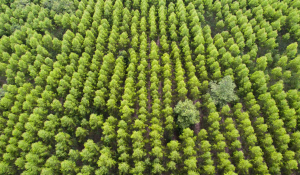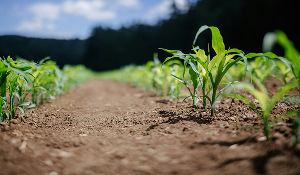Understanding Afforestation, Reforestation, & Revegetation (ARR) projects
Summary
1. What are the three main components of afforestation, reforestation, and revegetation projects?
3. What are the associated challenges of afforestation, reforestation, and revegetation?
4. Some examples of existing methodologies
5. Current status of projects and credits
6. Project Example: Agroforestry in Punjab
7. ClimateSeed's premium carbon removal and avoidance projects
Afforestation, Reforestation, and Revegetation (ARR) projects focus on establishing new forests or restoring degraded land by planting trees and implementing soil conservation practices.
What are the three main components of afforestation, reforestation, and revegetation projects?
- Afforestation: planting trees on land that has not been previously forested;
- Reforestation: replanting trees in areas that have been deforested;
- Revegetation: restoring vegetation cover in areas where it has been lost.
By increasing forest cover, ARR projects enhance carbon sequestration, improve soil health, and promote ecosystem resilience. These projects often involve community engagement, land-use planning, and monitoring to ensure the forested areas' successful establishment and long-term sustainability.
For more information on the two kinds of climate contribution projects and how they can be divided into seven categories, please read our blog: How to Select Climate Contribution Projects.
What are the environmental, social and economic benefits of afforestation, reforestation and revegetation projects?
ARR sequesters carbon in the tree’s biomass. ARR provides several notable benefits:
- A Nature-Based Solution that doesn’t require high-tech infrastructure or technology;
- Low cost alternative;
- Employment and livelihood opportunities (i.e. training in beekeeping, see example below for more information);
- Access to resources and ecosystem services.
Not only can afforestation and reforestation projects promote carbon sequestration goals, but they can also help forests by enhancing landscape connectivity, and reducing fragmentation. Additionally, afforestation and reforestation can:
- Preserve biodiversity hotspots. Planting trees can create new habitats for more tolerant species and enhance biodiversity. For example, favoring native species and avoiding invasive ones.
- Control the level of soil degradation by encouraging local communities to move towards agroforestry or silvo-pastoral farming systems. This can also bring new income opportunities to the locals.
Protect natural resources, and regulate water flow through the forest’s hydrological-related ecosystem services, storm flow regulation, and erosion control.
What are the associated challenges of afforestation, reforestation, and revegetation?
The large-scale implementation of ARR requires the recruitment of landowners to implement forestry practices on their land. This can be time-consuming, expensive, and difficult in terms of physical labor.
The forest design must consider biodiversity and water yield aspects to ensure spatial alignment and effective planning of its components.
Some examples of existing methodologies
Some of the current methodologies used in the VCM can be found below:
CDM
The Clean Development Mechanism (CDM) provides standardized methodologies for afforestation and reforestation (A/R) projects across different land types. These include AR-AMS0007 and AR-ACM003 for A/R activities on non-wetland lands, AR-AMS0003 for A/R on wetlands, and AR-AM0014 specifically for the restoration of degraded mangrove habitats, each ensuring measurable carbon sequestration and sustainable environmental benefits.
Gold Standard
The Gold Standard’s afforestation and reforestation (A/R) methodology provides a comprehensive framework for achieving greenhouse gas (GHG) emission reductions and carbon sequestration through the restoration and sustainable management of forest ecosystems. It outlines the requirements and procedures for project developers to quantify, monitor, and verify climate benefits, while also promoting biodiversity conservation and community co-benefits.
ACR
The American Carbon Registry (ACR) methodology for afforestation and reforestation (A/R) of degraded land provides a robust framework for restoring ecosystems and enhancing carbon sequestration on lands that have lost their natural forest cover or productive capacity. It sets out detailed procedures for project design, baseline establishment, monitoring, and verification to ensure the credibility and permanence of emission reductions. Beyond carbon benefits, the methodology encourages sustainable land management practices that improve soil health, support biodiversity, and generate social and economic co-benefits for local communities.
CAR
The Climate Action Reserve (CAR) provides standardized protocols to guide forestry-related projects. Its Forest Projects Protocol outlines methods for reducing greenhouse gas emissions and enhancing carbon sequestration through sustainable forest management, while the Urban Tree Planting Protocol focuses on the climate, social, and environmental benefits of planting and maintaining trees in urban areas.
Verra's Verified Carbon Standard (VCS)
Verra’s Verified Carbon Standard (VCS) provides rigorous frameworks for developing high-quality carbon projects. The VM0047 Afforestation, Reforestation, and Revegetation (ARR) methodology specifically outlines the procedures for restoring forest and vegetation cover on degraded or non-forested lands, ensuring measurable greenhouse gas reductions, enhanced carbon sequestration, and additional environmental and social co-benefits.
Current status of projects and credits
As of May 2023, a large number of projects, 290, are registered under Verra, Gold Standard with 47 has the second largest number of projects, CAR and ACR stand with 14 and 11 projects, respectively. The total number of credits issued is almost 60 million, most of them concentrated in South America, with Uruguay as the main reference, and East Asia, with China as the main promoter of this type of projects. In the South American country, reforestation and afforestation with eminently productive objectives predominate, while in China there is a greater diversity of objectives in these actions, with projects with both productive and protection objectives.

Project Example: Agroforestry in Punjab
Punjab, primarily an agricultural region, relies heavily on a traditional rice-wheat cropping system that has been crucial for India's food security. However, certain areas are experiencing challenges such as nutrient depletion, declining groundwater levels, and increased pests and diseases due to overexploitation. These issues highlight the need to transition from the current cropping system.
Agroforestry has emerged as a promising alternative to diversify from the conventional rice-wheat rotation. This sector currently supplies over 80% of the country's wood and wood products, with 6% coming from natural forests and 12% through imports. In Punjab, agroforestry not only supplements farm income through carbon revenue but also addresses the socio-economic needs of farming communities. It aims to empower and uplift their livelihoods, significantly contributing to climate resilience. Various tree species, both native and non-native, are cultivated across Punjab's diverse agro-climatic zones, enhancing biodiversity. Agroforestry meets the rising demand for timber and tree-based products while simultaneously conserving and rehabilitating ecosystems. For more information, please visit our case study.
Other KPIs:
- 4,073 of managed land
- 1,822 farmers included
- 24.8M tCO2e sequestered during the project's lifetime
If you would like to purchase carbon credits for this project, please contact us.
ClimateSeed's premium carbon removal and avoidance projects
At ClimateSeed, we offer both carbon removal and avoidance projects in our portfolio. We have dedicated experts that ensure projects are of the highest quality, and have passed our robust three-level verification process. Our unique approach maximizes your positive environmental and social impacts, and offers risk mitigation backed by top-tier financial expertise.
Contact us for more information.
Sources:
- Berkeley Carbon Trading Project: Ivy S. So, Barbara K. Haya, Micah Elias. (2023, May). Voluntary Registry Offsets Database v8, Berkeley Carbon Trading Project, University of California, Berkeley.
- Europa
- PWC
- Science Direct
- World Economic Forum
FAQs
REDD+ (Reducing Emissions from Deforestation and Forest Degradation) is an initiative developed under the United Nations Framework Convention on Climate Change (UNFCCC) to address deforestation and forest degradation.
The ‘+’ sign represents the inclusion of further measures taken like conservation, sustainable management of forests, and enhancement of forest carbon stocks to maximize impact.
For more information, read this article.
In the face of the climate emergency and growing commitments toward global carbon neutrality, more and more companies are engaging in climate contribution initiatives through the Voluntary Carbon Market (VCM). In this context, not all carbon credits are created equal, and it becomes essential to understand how to compare them in order to make informed and responsible decisions.
For more information, please read our blog.
Regenerative agriculture projects (classified under Nature-based Solutions) have the unique potential to generate both avoidance and removal carbon credits, thanks to the multifaceted ways in which they interact with the carbon cycle.
For more information, please read our article.
Share this
You May Also Like
These Related Stories

The difference between carbon removal & carbon avoidance projects

Does Regenerative Agriculture Generate Carbon Avoidance or Removal Credits?



